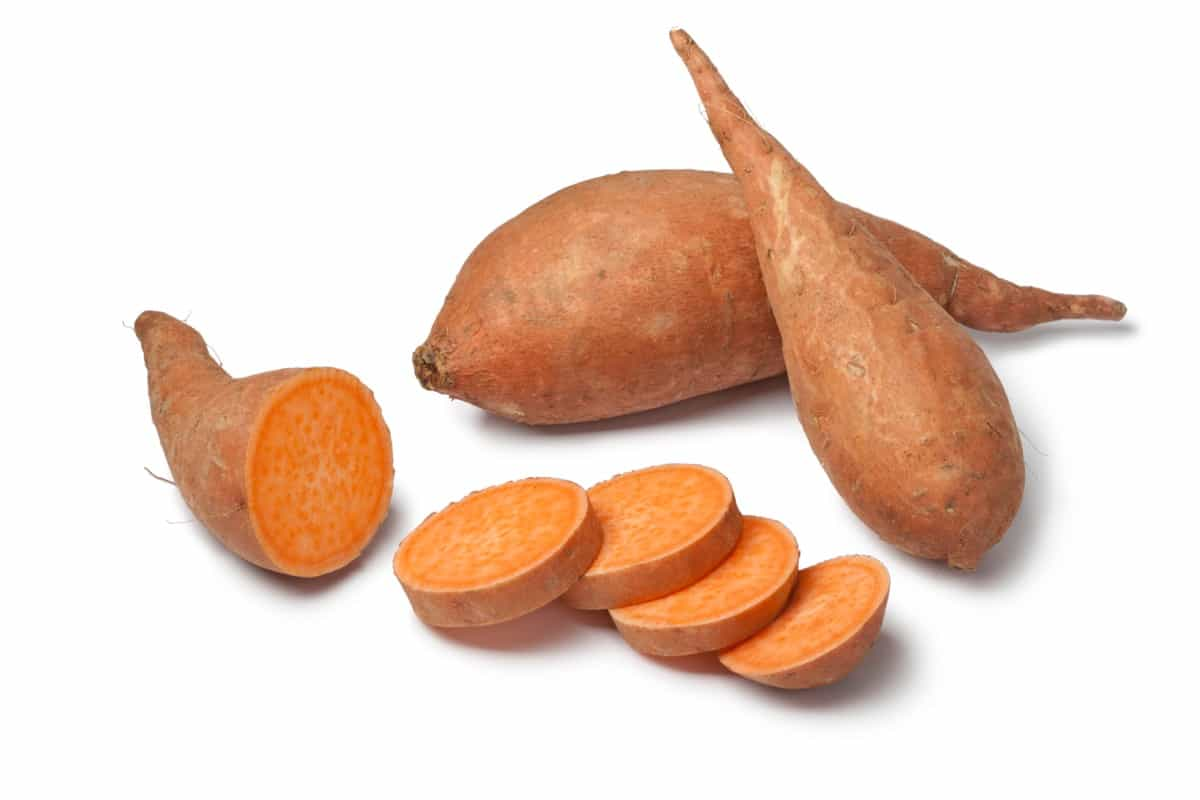Welcome to the world of hydroponic gardening, where traditional soil is replaced with water as the growing medium. In this guide, we will explore the fascinating process of growing sweet potatoes hydroponically without the need for soil. By harnessing the power of water, you can cultivate healthy and delicious sweet potatoes right in your home. We’ll cover the essential steps for planting and caring for your hydroponic sweet potato crop, allowing you to enjoy the rewards of this innovative and efficient gardening technique.

Growing Sweet Potatoes in Water
Hydroponic Sweet Potato Cultivation
Hydroponic sweet potato cultivation involves growing sweet potatoes without soil, using water as the primary growing medium. This innovative technique offers several advantages, including optimized nutrient uptake, faster growth rates, and greater control over environmental conditions.
In hydroponic systems, sweet potato plants receive a nutrient-rich solution directly to their roots, ensuring they receive all the essential elements for healthy growth. Studies have shown that hydroponically grown sweet potatoes can yield higher crop productivity compared to traditional soil-based methods. Additionally, this method reduces the risk of soil-borne diseases and allows year-round cultivation.
Growing Sweet Potatoes Without Soil
Instead of traditional soil, various growing mediums can be used in hydroponics, such as clay balls, perlite, coconut coir, or water. This method allows for faster potato growth compared to conventional soil-based methods. In hydroponic systems, water carries essential nutrients for sweet potatoes. You can opt for homemade all-natural fertilizers like compost tea or commercially available fertilizers. It’s important to consider the source and usage of nutrients for optimal product quality. Organic growing practices are recommended for better health benefits and environmental sustainability.
Hydroponic System for Sweet Potatoes
A nutrient-rich solution is used instead of soil, ensuring optimal nutrient uptake. Common hydroponic methods include nutrient film technique (NFT) and deep water culture (DWC). These systems allow year-round cultivation, faster growth, and higher crop productivity than traditional soil-based methods.
Water Culture Method for Sweet Potato Cultivation
The water culture method for sweet potato cultivation is a hydroponic technique where the plants are grown directly in water. Instead of using soil or a growing medium, the sweet potato vines are suspended in nutrient-rich water. This method provides optimal access to nutrients and efficient water uptake, resulting in healthy and productive sweet potato crops.
Benefits of Growing Sweet Potatoes Hydroponically
Hydroponic systems offer increased productivity in sweet potatoes, efficient resource utilization, year-round cultivation, and disease prevention. They use less water and space, maximizing nutrient uptake, and promoting healthier plants, reducing the risk of soil-borne diseases and pests. This sustainable cultivation method ensures year-round production and improved success rates.
Nutrient Requirements for Hydroponic Sweet Potato Plants
Sweet potato plants have specific nutrient requirements for optimal growth in hydroponic systems. The pH level should be maintained between 5.8 and 6.2 to ensure nutrient availability. The electrical conductivity (EC) should range from 1.5 to 2.5 mS/cm, and the recommended parts per million (PPM) is around 1000-1500. An ideal NPK ratio for sweet potatoes is approximately 8-12-32, indicating higher phosphorus and potassium levels than nitrogen.
Best Varieties of Sweet Potatoes for Water-based Cultivation
Certain varieties thrive exceptionally well regarding the water-based cultivation of sweet potatoes. Some top choices include Beauregard, Covington, and Orleans. These varieties are known for their high yield, disease resistance, and excellent flavor. They are well-suited for hydroponic systems.
Harvesting and Storing Hydroponically Grown Sweet Potatoes
Once the plants have reached maturity, carefully dig up the tubers. Gently brush off excess soil or growing medium. To store them, cure the sweet potatoes in a warm, humid environment for a week, then transfer them to a cool, dark place with good ventilation. Proper storage can prolong their shelf life for 3-5 months.
In case you missed it: Backyard Sweet Potatoes: Growing From Scratch for Planting to Harvesting

How to Grow Sweet Potatoes in Water
Select a healthy sweet potato and submerge it in water, using toothpicks to suspend it. Place the container in a warm, location and change the water every few days. After a few weeks, roots and sprouts form. Remove the sprouts, which are 4-6 inches long, and prepare a separate container with slips. Submerge the slips in the water, ensuring the roots are submerged. Maintain and change the water level regularly to provide a clean and nutrient-rich environment. After a few weeks, slips develop roots and can be transplanted into the soil or a hydroponic system for further growth.
Growing Sweet Potato Vines in Water
Select a healthy sweet potato and suspend it in a water container, ensuring it’s well-lit and warm. As the sweet potato sits, it produces vines that extend outward. Regularly change the water to maintain freshness and prevent bacteria buildup. Over time, the vines can grow, and you can trim them if needed. They can be used for decorative purposes or propagated by placing cuttings in water to develop roots. Once roots form, transfer the cuttings to soil or a hydroponic system for further growth.
How to Sprout Sweet Potatoes in Water
Place a healthy sweet potato in a container filled with water, ensuring about 1/3 to 1/2 of the potato is submerged. Place the container in a warm location with natural light and change the water regularly. Within weeks, the sweet potato will begin sprouting, and after 4-6 inches, remove the shoots.
Transfer the sprouts, called slips, to a separate container with water, ensuring the roots are submerged. Keep the slips in a well-lit area and regularly change the water to provide nutrients. After a few weeks, the slips will develop strong roots and can be transplanted into the soil or a hydroponic system for further growth.
Growing Sweet Potatoes Indoors in Water
Place a healthy sweet potato in a container filled with water, ensuring some is submerged. Place the container in a warm location with bright light and change the water regularly. As the sweet potato sits, it develops roots and sprouts. Remove the sprouts, or slips, from the sweet potato and place them in a separate container with submerged roots.
Provide ample light and change the water periodically. After a few weeks, the slips will establish strong roots, ready for transplanting. Choose a suitable growing medium, such as soil or hydroponic setup, and transfer the slips indoors for continued growth.
Growing Sweet Potato Slips in Water
Place a healthy sweet potato in a container filled with water, ensuring the part is submerged. Place the container in a warm location with natural light and change the water regularly to maintain cleanliness and prevent bacterial growth. As the sweet potato sits in the water, it produces shoots or slips.
Once the slips reach 4-6 inches, remove them from the sweet potato and transfer them to a separate container filled with water, ensuring their roots are submerged. Provide sufficient light and change the water periodically to supply essential nutrients. After a few weeks, the slips will develop strong roots, indicating they are ready for transplanting. Transfer the slips to soil or a hydroponic system for continued growth and development.
Observe the development of roots and sprouts from the sweet potato over time, then transfer the slips to a separate container filled with water, ensuring their roots are submerged. Track the growth of the slips, noting changes in root development and overall plant health. Ensure the slips receive adequate light and change the water regularly to maintain the nutrient supply. Record and document the progress of the sweet potato slips as they grow and mature in the water.
In case you missed it: Container Growing Sweet Potatoes: Starting from Scratch for Planting to Harvest

Conclusion
Hydroponic sweet potato cultivation offers a soil-free alternative for growing nutritious and delicious sweet potatoes. With proper care, nutrient-rich water, and optimal conditions, you can enjoy a successful harvest of sweet potatoes using this innovative and efficient method.
- Feed Your Flock for Less: Top 10 Tips to Save on Chicken Feed
- Ultimate Guide to Ossabaw Island Hog: Breeding, Raising, Diet, and Care
- Hatching Answers: The Top 10 Reasons Your Chickens Aren’t Laying Eggs
- Eggs and Economics: Breaking Down the Cost of Raising Backyard Chickens
- Defend Your Greens: Proven Methods to Keep Iguanas Out of Your Garden
- Ultimate Guide to Cinnamon Queen Chicken: A Comprehensive Guide for Beginners
- Ultimate Guide to California Tan Chicken: Breeding, Raising, Diet, Egg-Production and Care
- Ultimate Guide to Marsh Daisy Chicken: Breeding, Raising, Diet, and Care
- 10 Types of Chicken Farming Businesses You Can Start for Profits